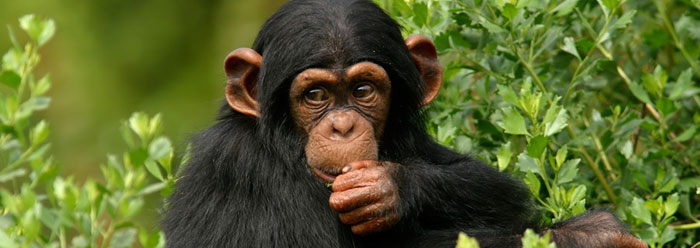An international team of geneticists recently set out to explore in more detail the evolutionary relationship between humans and chimpanzees. Despite their assumption that man and chimp share a common ancestor, their findings are actually more consistent with the creation model.
In the study, which was published in the November 2008 issue of the journal Genome Research, the geneticists compared the genomes of 30 chimpanzees with those of 30 central African humans. Their techniques targeted special DNA sequences, some of which contain genes that occur in multiples or in few numbers in different individuals. These “copy number variations” (CNVs) are peculiar because each one ranges from about one thousand to one million DNA bases long, and they are often found in places where chromosomes are regularly chopped and spliced. Higher numbers of particular CNVs (and the genes they contain) can aid the immune system in resisting certain diseases.
Some specifications of CNV design are that they are regions of DNA that are variably repeated, are often found in zones that are copied and spliced, and contain immune system (and few other) genes. They do not contain core genes, which are essential to basic cell function. If such genes were housed in an area that was more vulnerable to volatility and change, the survival of the cell itself would be at risk.
How does the cell “know” how to protect itself in this manner? According to the evolutionary model, it is the result of non-directed natural selection. According to the creation model, the Creator wisely placed core genes in regions of chromosomes that are much more stable. Conversely, it seems reasonable that the same Creator placed other genes in more volatile regions of chromosomes for the purpose of allowing more variety and survivability in succeeding generations.
At one point in their Genome Research report, the investigators referred to the chromosomal arrangement of CNVs as “sequence motifs or architectures.”1 “Architecture” logically suggests an architect. Although these researchers have encountered architectural (designed) features in DNA, they hold fast to their belief that nature itself is the architect, even though scientists have not discovered a plausible mechanism or observable example.
It would make sense that a Master Architect fashioned these attributes—some unique to chimpanzees, some unique to humans, and others quite similar in both—in genomes so that each group could better survive the different diseases it might encounter. These genetic “architectures” provide evidence for purposeful design and are more consistent with being the products of an all-knowing God as the Bible describes, rather than the products of indiscriminate nature.
Reference
1. Perry, G. H. et al. 2008. Copy Number Variation and Evolution in Human and Chimpanzee. Genome Research. 18 (11): 1703.
* Mr. Thomas is Science Writer.
Article posted on November 14, 2008.




















